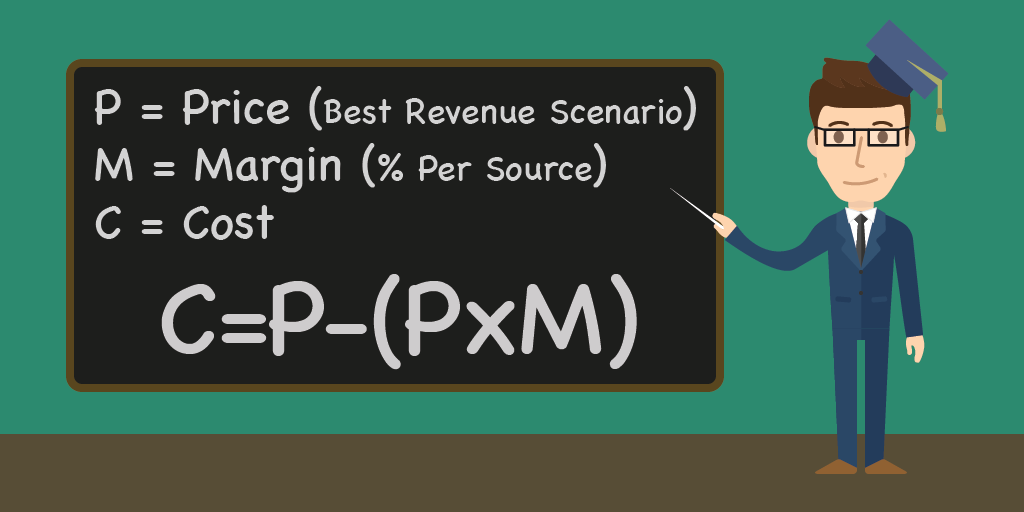First, What Is Ping Post & How Does It Work With boberdoo?
To understand how leads are sold via ping post, we first need to know what ping post actually is. From a 30,000 foot overview, ping post lets a user send partial information, the ping, into their network of buyers, also called a ping tree. The ping is only information that is needed for the buyer to make an informed purchase, which excludes personal information, such as the lead's name or phone number. After the highest bidder is found with a matching filter set, the rest of the lead's information is routed to them so they can connect.
Since this is all done in real time, calculations need to be made to determine the cost of a lead. The boberdoo system uses this formula to figure this out. Price needs to be determined first; this is done by figuring out the best revenue scenario for the lead to be sold either exclusively or non-exclusively. When a single buyer's price is higher than the sum of all non-exclusive buyers, the lead is sold exclusively to that buyer. Otherwise, it is sold to all non-exclusive buyers if the price is more.
Margin is then calculated by how much is taken out for each source that the lead passes through. For example, if a buyer decided to get one of his buyers to bid on the lead, they will take out a percentage for what their buyer pays, which raises the price of the lead. This is what puts together the formula, as shown below, and how leads are priced and sold via ping post in the boberdoo system.

Benefits of using ping post with boberdoo
Static vs Dynamic Pricing
Ping post is not just for companies with only dynamic buyers. Lead sellers can set up both fixed price lead buyers and dynamic buyers utilizing ping post software. As your system receives bids from the dynamic buyers, your lead system automatically compares them to the fixed price buyers to calculate your best scenario to decide which buyer(s) receive the lead.
With dynamic pricing, a lead buyer can return different bids to the lead seller's ping, which allows the buyer to have greater flexibility. With static (fixed) pricing, a lead buyer agrees to pay a set amount for all leads with a given set of minimum criteria.
Live Transfers
There are a few different methods to using live transfers, but one of them actually uses ping post. It is a bit complicated, so bear with us. First, the leads are phone calls, so the "in real time" part of ping post definitely comes in handy. A lead will either call into or be called by a call center, where the representative will collect the lead's information. The ping is then sent out to all the buyers, and the highest bidder's phone number is routed to the call center. The representative will then connect the lead and the buyer. Although, this method of live transfers does require extensive system customization, which our support team can do, you can absolutely sell calls with ping post.
Bid Experiments
Using bobderdoo's bid experiments technology, you can set rules to adjust bids for maximum ROI. Testing different rules, such as higher bids on weekends, or lower bids at certain times of the day or in different places, can reap some interesting results. This, in turn, gives you valuable feedback for setting future bids.
So what are you waiting for? If you are looking to start with ping post and wanting to see if you can start selling faster, safer and with more versatility, we here at boberdoo are happy to help. Request a demo to see the boberdoo system in action, or if you are not ready for that, download our whitepaper on the basics of ping post to learn more today.



